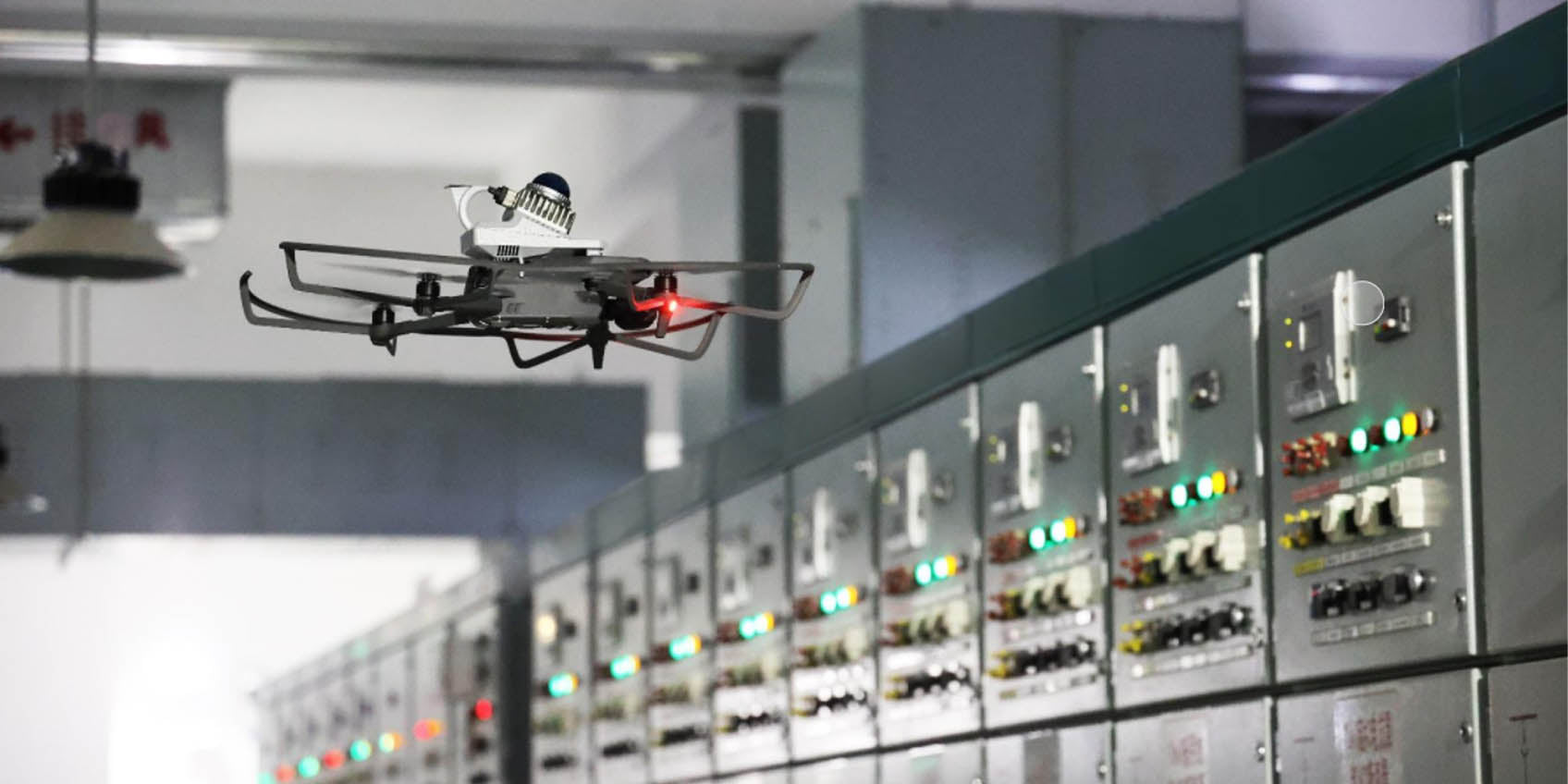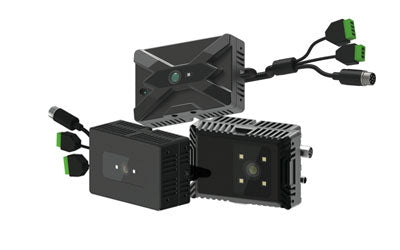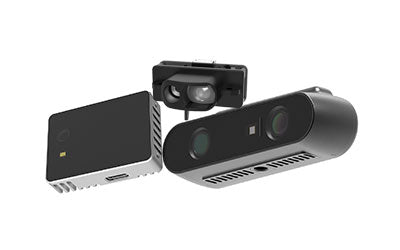Key Applications of TOF Technology in Indoor Drone Obstacle Avoidance
- por TofSensor

With the continuous advancement of drone technology, drones are now widely used in various industries, including warehousing logistics, indoor monitoring, aerial photography, and more. However, the complexity and confined spaces of indoor environments pose significant challenges for drones, especially in terms of obstacle avoidance. To address these challenges, TOF (Time-of-Flight) technology, a high-precision and real-time sensor technology, has emerged as the ideal solution for indoor drone obstacle avoidance.
How do drones avoid obstacles?
Drones avoid obstacles using a combination of sensors and advanced algorithms. They typically use sensors like ultrasonic, infrared, optical flow, and LiDAR to detect objects in their flight path. When an obstacle is detected, the drone's onboard system processes the data and adjusts its flight path or speed to avoid collision. Some drones can automatically stop, change direction, or fly around obstacles.
What is TOF Technology?
TOF (Time-of-Flight) technology is a distance measurement technology based on the principle of light signal flight time. It emits light pulses and measures the time it takes for the light to travel from the sensor to the surface of an object and return. This time is then used to calculate the distance between the sensor and the object. TOF technology is known for its high precision and real-time response, making it exceptionally effective in applications such as drone obstacle avoidance and distance measurement.
Advantages of TOF Technology in Indoor Drone Obstacle Avoidance
-
High Precision Measurement: TOF sensors can provide centimeter-level or even millimeter-level distance accuracy, which is crucial for drones operating in indoor environments. In complex and narrow spaces, precise distance measurement helps drones accurately judge the proximity to surrounding objects and avoid collisions with walls, ceilings, furniture, or other obstacles. For example, when a drone approaches an obstacle, the TOF sensor can quickly provide precise distance data, ensuring that flight paths are adjusted in a timely and effective manner. This high level of accuracy significantly enhances the safety of drone flights in complex environments.
-
Real-Time Data Processing: TOF sensors are extremely fast, capable of measuring distances and transmitting data in microsecond-level intervals. In dynamic environments, drones need to react quickly to changes in their surroundings to avoid collisions or deviations from their flight path. TOF technology allows drones to instantly calculate the distance to nearby objects and feed this data into the drone's flight control system. This enables the drone to detect surrounding obstacles in real-time and make quick decisions to optimize its flight trajectory. Especially during high-speed flights or sharp turns, TOF sensors provide timely, accurate obstacle data to ensure stable and safe flight.
-
All-Weather Operation: Compared to traditional visual or infrared sensors, TOF technology has the distinct advantage of being independent of lighting conditions. Since TOF sensors measure distance based on the time taken for light pulses to travel, they can operate effectively in low light, bright light, fog, dust, or even complete darkness. This capability is especially important for indoor drone operations, where lighting conditions can often be poor or inconsistent. In these cases, TOF sensors continue to provide stable, accurate measurements, allowing drones to navigate and avoid obstacles efficiently in various lighting and environmental conditions, without being affected by external factors.
-
Non-Contact Measurement: TOF technology employs a non-contact distance measurement method, meaning it does not require physical contact with objects to obtain precise distance data. This non-contact approach not only prevents potential damage to surrounding objects, particularly in proximity to delicate equipment, but also reduces wear and tear on the sensors themselves, extending their lifespan. Additionally, TOF technology is not influenced by the material of the object’s surface. It can effectively measure distances on various surfaces, whether smooth, rough, or highly reflective, ensuring consistent performance in diverse environments without being affected by surface characteristics.
How TOF Technology Enhances Indoor Drone Obstacle Avoidance
-
Precise Obstacle Detection: Indoor environments are typically filled with various obstacles, such as walls, furniture, cables, ceilings, etc. In confined or irregularly shaped spaces, drones are often in close proximity to obstacles, and quick, precise reactions are crucial to avoid collisions. TOF sensors emit light pulses and measure the time it takes for the reflected light to return, accurately detecting the distance to these obstacles, often with precision at the centimeter or millimeter level. During flight, TOF sensors continuously gather information on the position of obstacles and relay this data to the drone's flight control system, helping it adjust its flight path and avoid collisions, thereby ensuring safety.
-
Multi-Sensor Fusion: To further enhance obstacle avoidance capabilities, TOF sensors are often combined with other types of sensors (such as ultrasonic, LiDAR, or visual sensors). This multi-sensor fusion significantly boosts the drone's environmental awareness. Each sensor has its unique strengths and limitations, and in certain environments, TOF sensors may have some limitations (such as poor reflection from objects or complex lighting conditions). In such cases, other sensors (e.g., LiDAR or visual sensors) can compensate for these shortcomings. When multiple sensors work together, drones receive more comprehensive and accurate environmental data, reducing the risk of obstacle avoidance failures caused by the limitations or malfunctions of any single sensor. This sensor fusion ensures that drones can continue to fly smoothly, even in challenging lighting or environmental conditions.
-
Dynamic Environment Adaptation: Indoor environments are often dynamic, with obstacles that may not only be static but also mobile, such as people or moving objects. TOF sensors provide real-time data processing and can continuously monitor changes in the environment. When an obstacle appears or moves, TOF sensors can immediately detect the change and calculate updated distance data, providing timely feedback to the drone. This dynamic monitoring allows drones to adjust their flight paths in real-time to avoid collisions with moving obstacles. This capability is especially crucial in complex, confined indoor spaces, where dynamic adaptation helps drones maintain efficient obstacle avoidance, improving both flight safety and autonomous navigation capabilities.
-
Efficient Path Planning: TOF sensors not only help drones avoid obstacles in real-time but also assist in intelligent path planning. By collecting real-time distance data from the surrounding environment, drones can plan more optimized flight routes, minimizing the likelihood of encountering obstacles. This efficient path planning is particularly useful in indoor environments with many obstacles or narrow passages, improving flight efficiency and safety.
-
Adaptability to Complex Environments: The complexity of indoor environments, such as crowded spaces, poor lighting, and numerous obstacles, requires drones to be highly adaptable. TOF technology can operate effectively in various lighting conditions, whether in low light, bright light, or complete darkness. This allows drones to fly smoothly in dimly lit offices, warehouses, basements, and other indoor spaces, even without visual assistance. The TOF sensor ensures the drone can avoid obstacles effectively, ensuring safe flight even in the absence of sufficient external lighting.
TOF Technology Driving Drone Industry Growth
With the ongoing maturation of TOF technology, its potential in the drone industry is vast. Especially in indoor environments, the high precision, real-time response, and all-weather operation of TOF sensors make them a core technology for drone obstacle avoidance. As the technology continues to improve and integrate, TOF sensors will play an increasingly important role in a broader range of drone applications, driving the development of smart flight and advancing the drone industry.
Conclusion
The application of TOF technology in indoor drone obstacle avoidance greatly enhances the safety and operational flexibility of drones. By integrating TOF technology, drones can achieve more precise and intelligent obstacle avoidance in complex indoor environments, providing more efficient and stable solutions for indoor logistics, inspections, monitoring, and other fields.
With continuous technological innovation, TOF technology will become an increasingly critical component of drone development, driving the industry toward a more intelligent and automated future.
Synexens 3D Of RGBD ToF Depth Sensor_CS30

Our professional technical team specializing in 3D camera ranging is ready to assist you at any time. Whether you encounter any issues with your TOF camera after purchase or need clarification on TOF technology, feel free to contact us anytime. We are committed to providing high-quality technical after-sales service and user experience, ensuring your peace of mind in both shopping and using our products.
-
Publicado en
CS30




